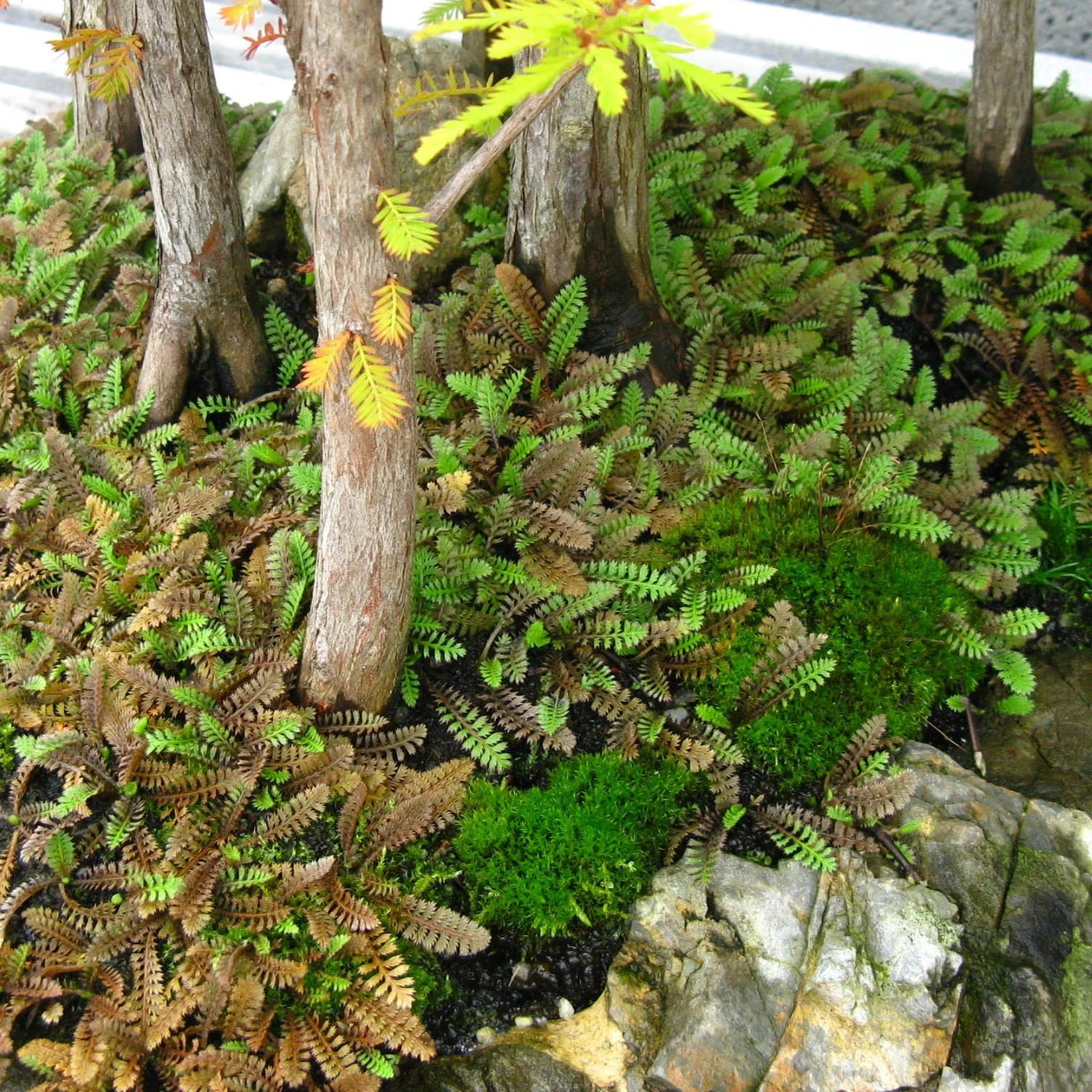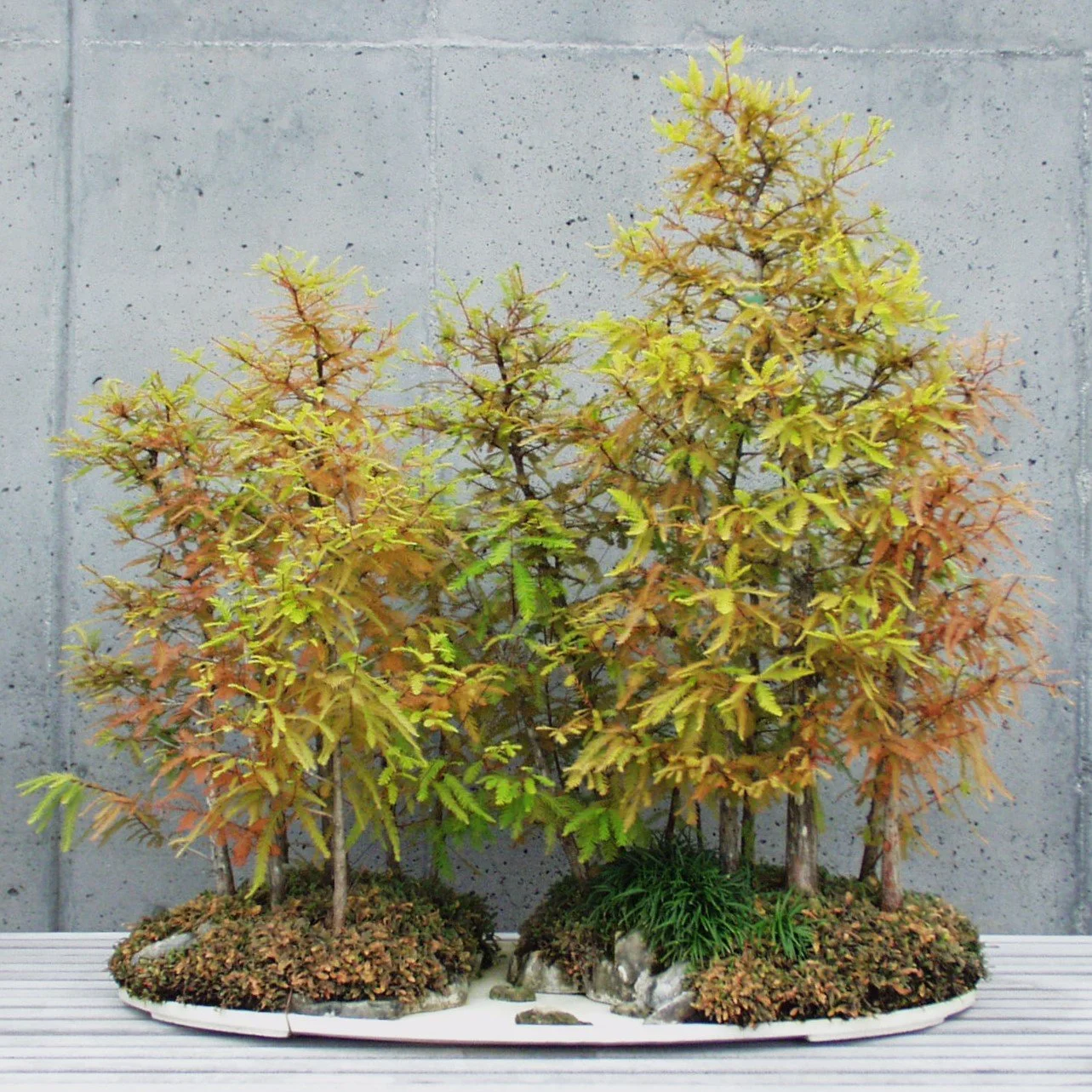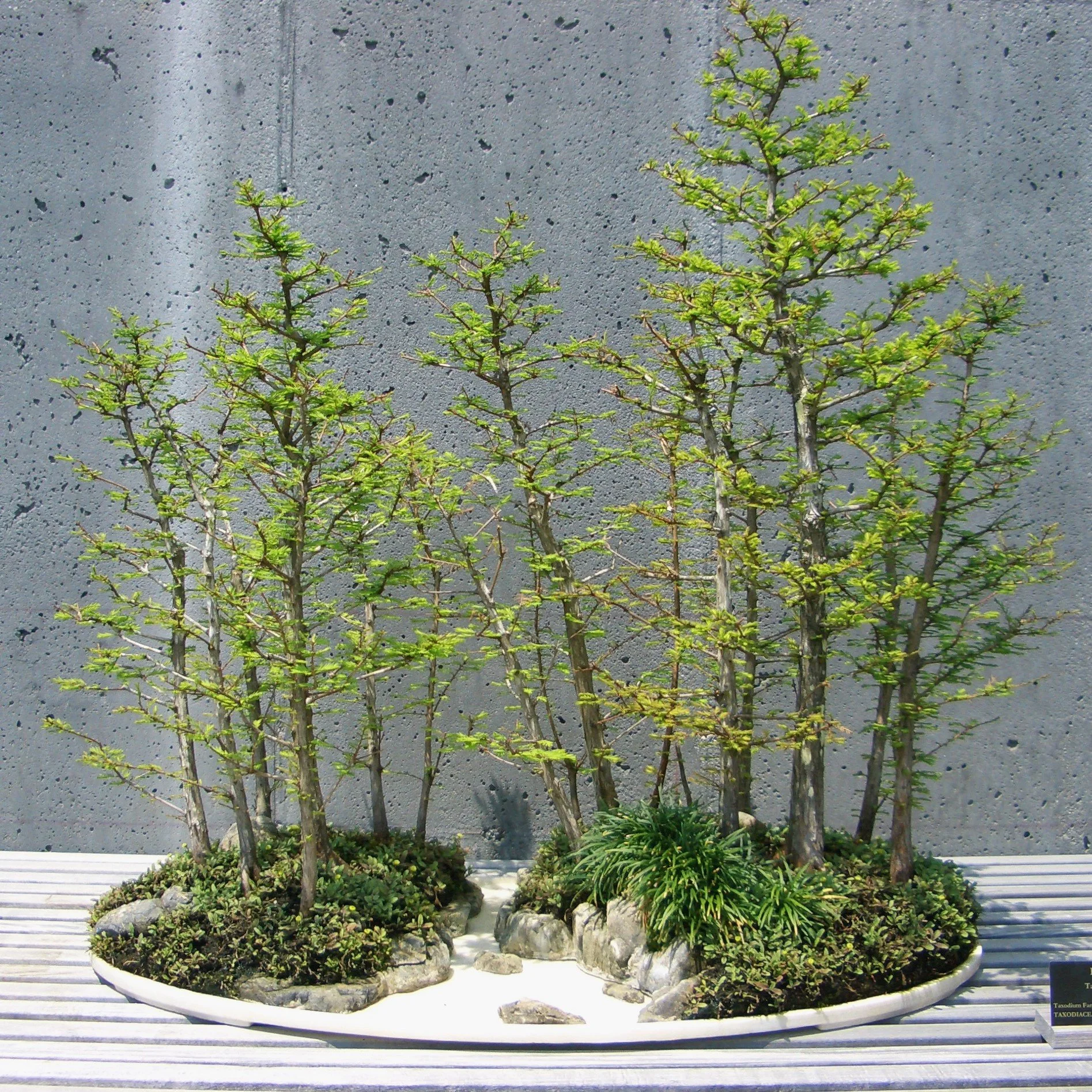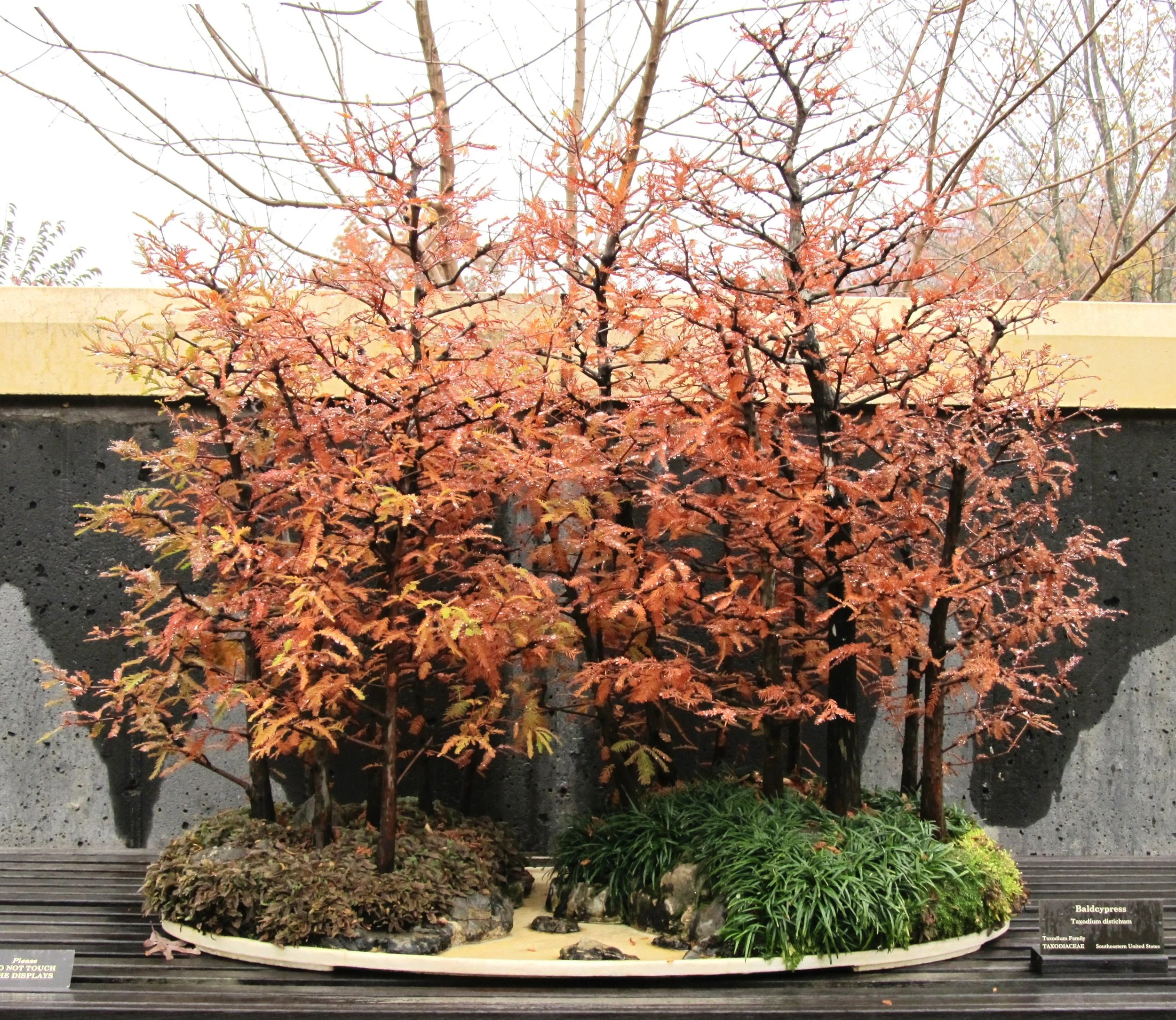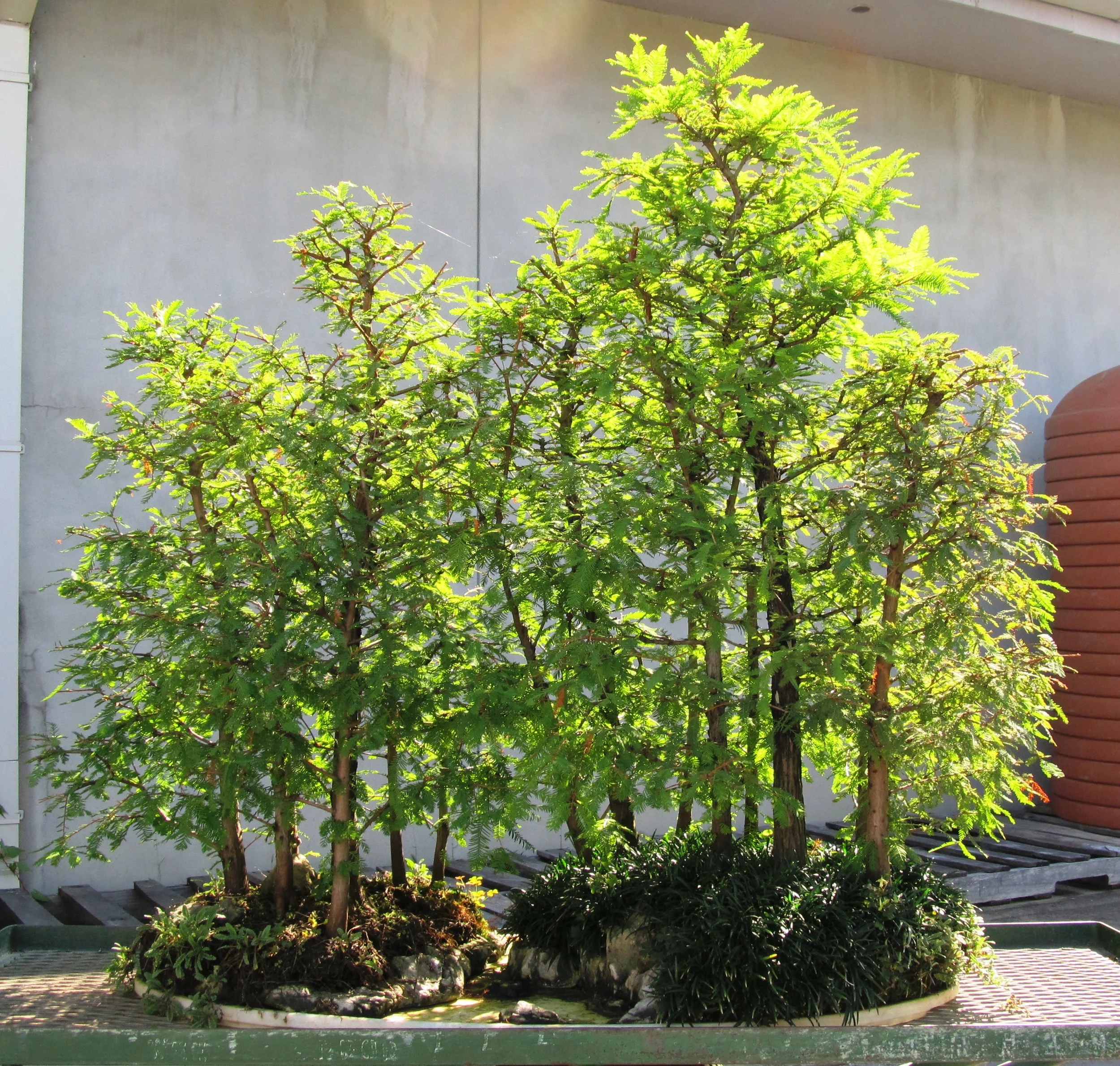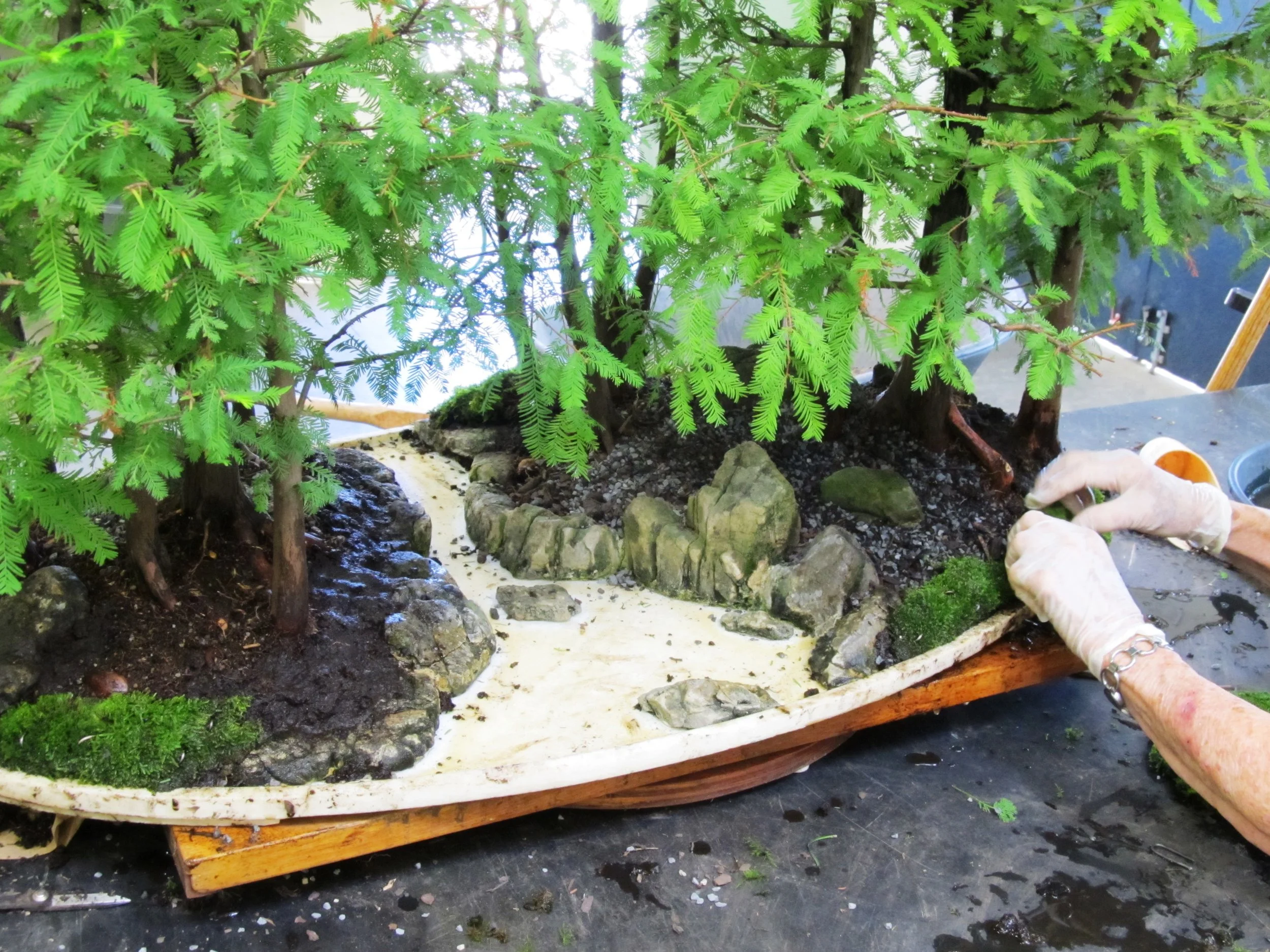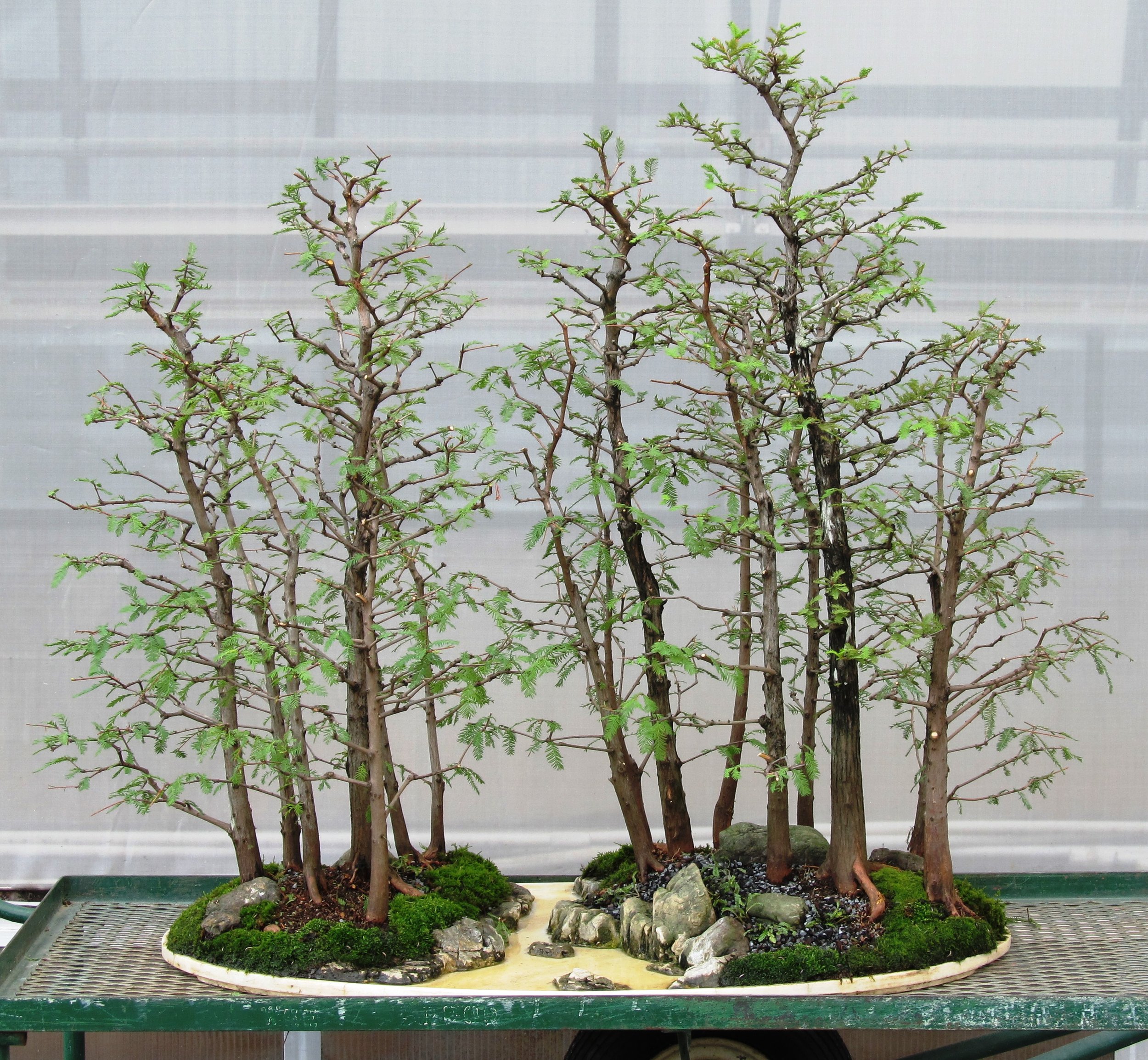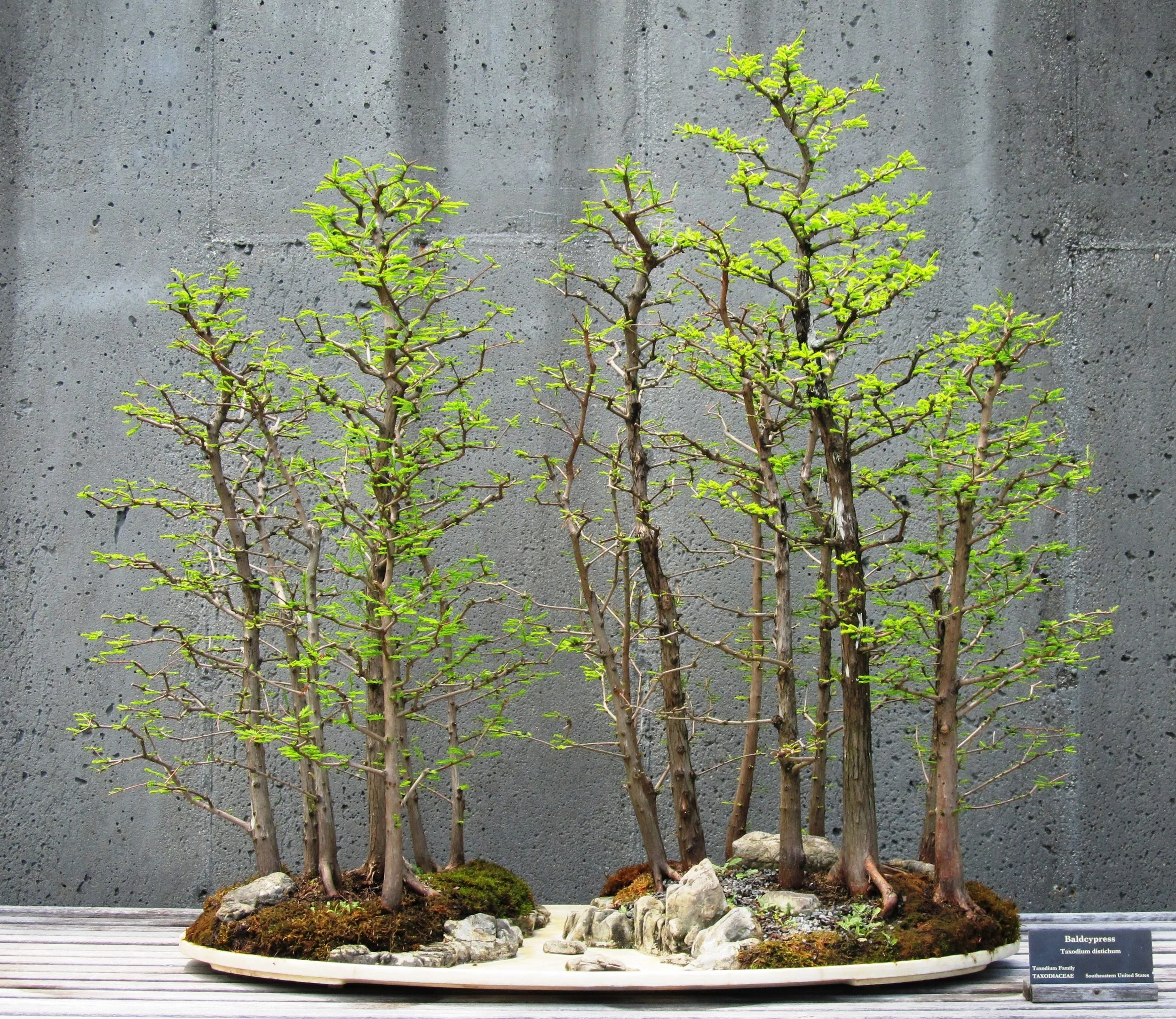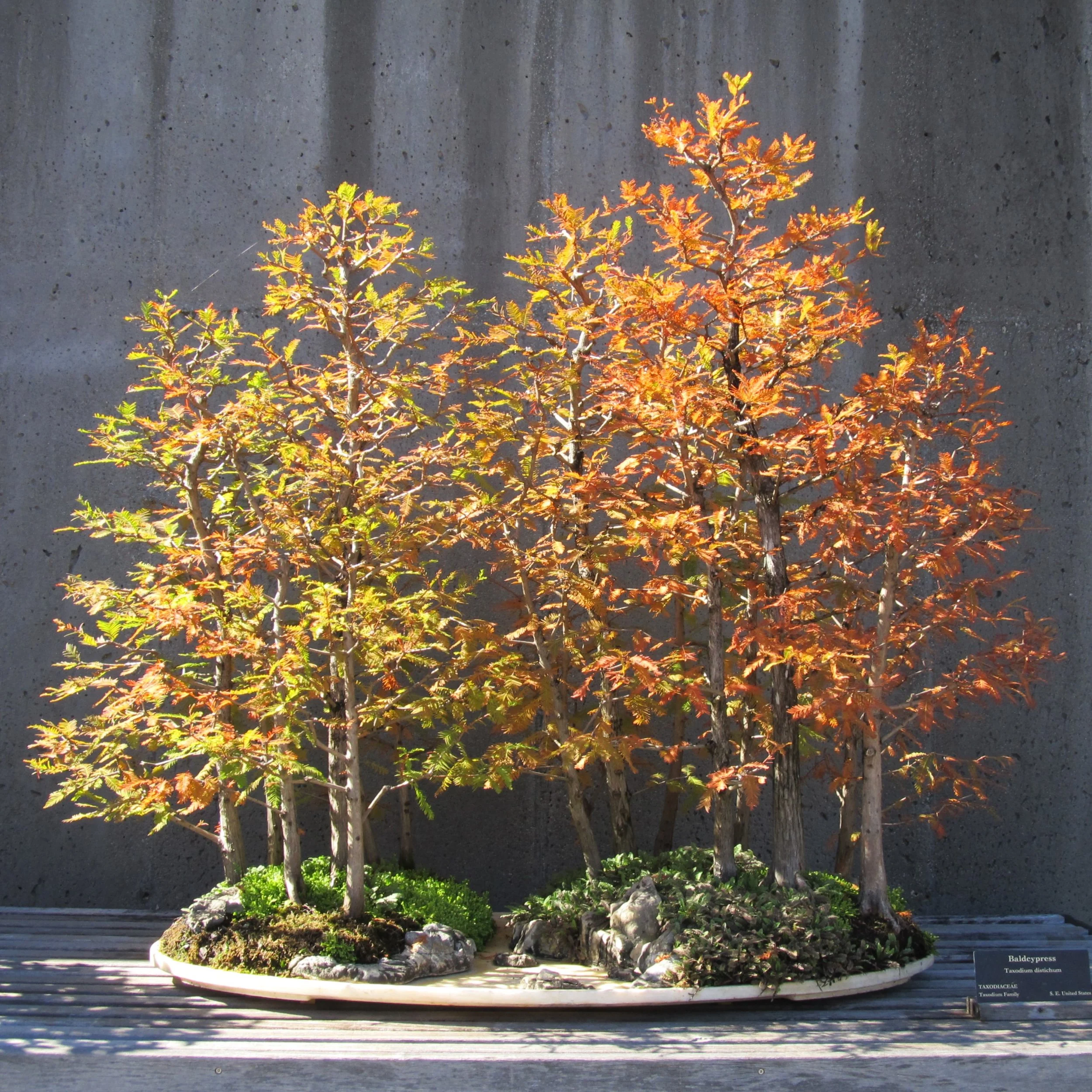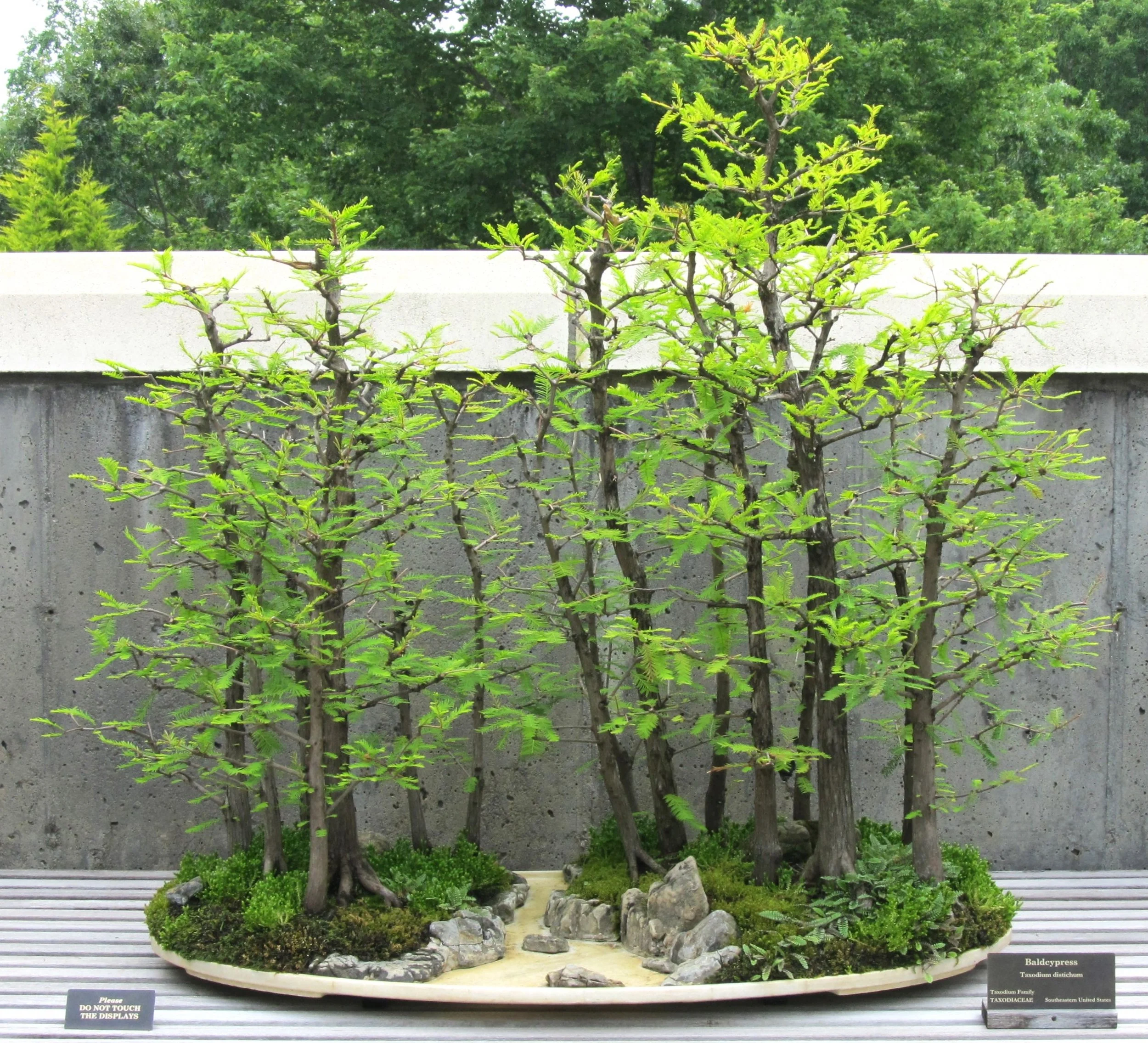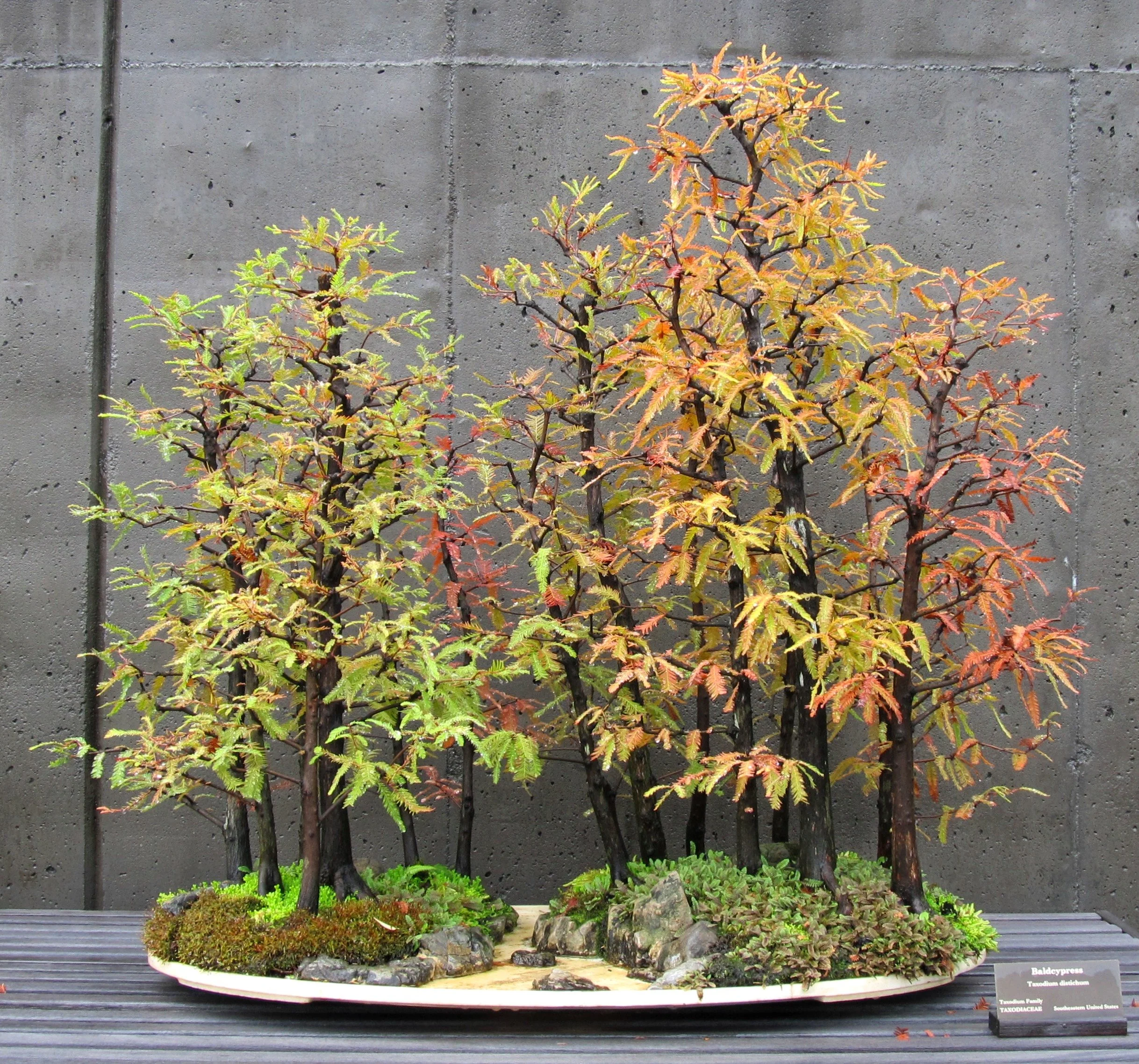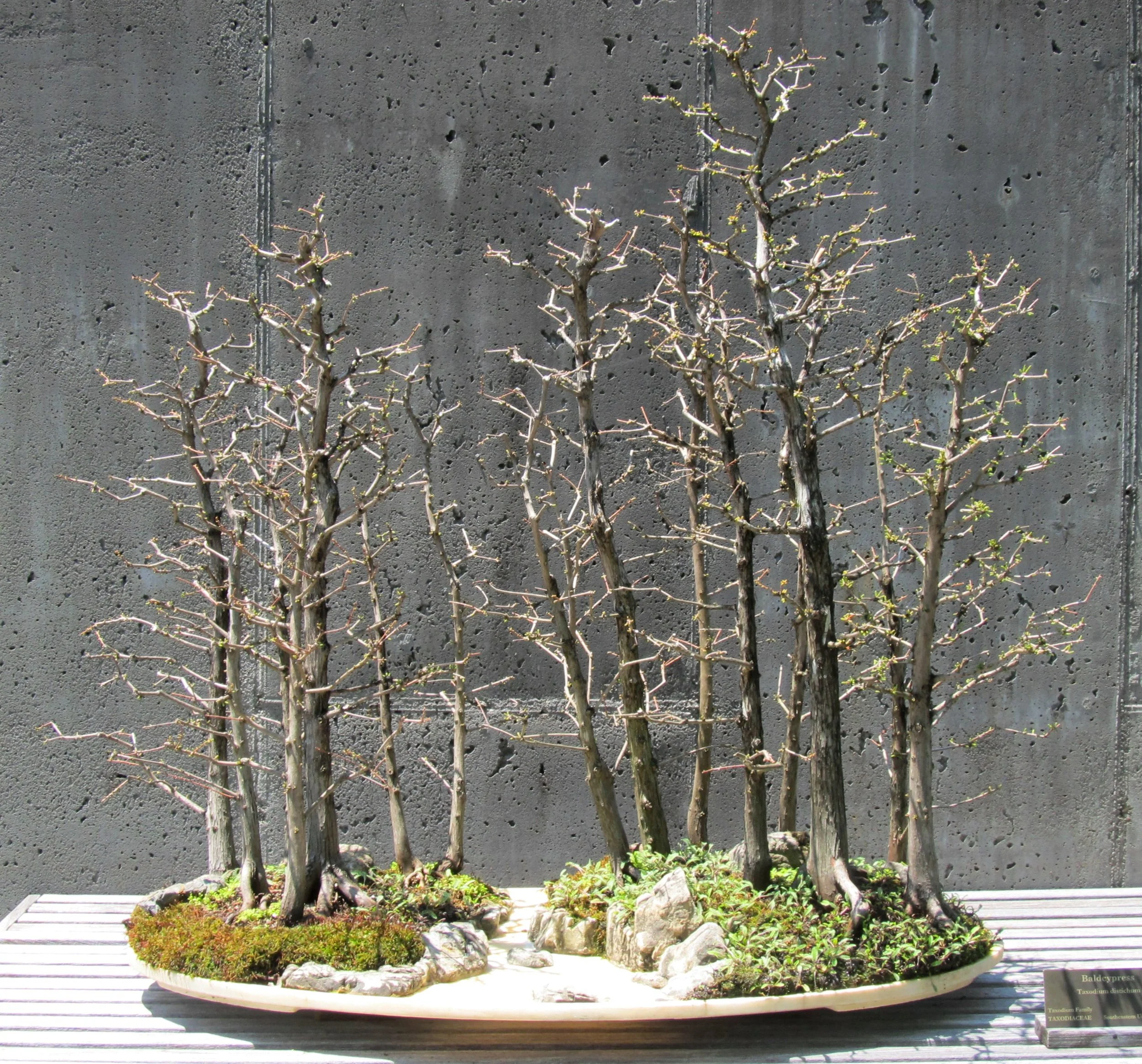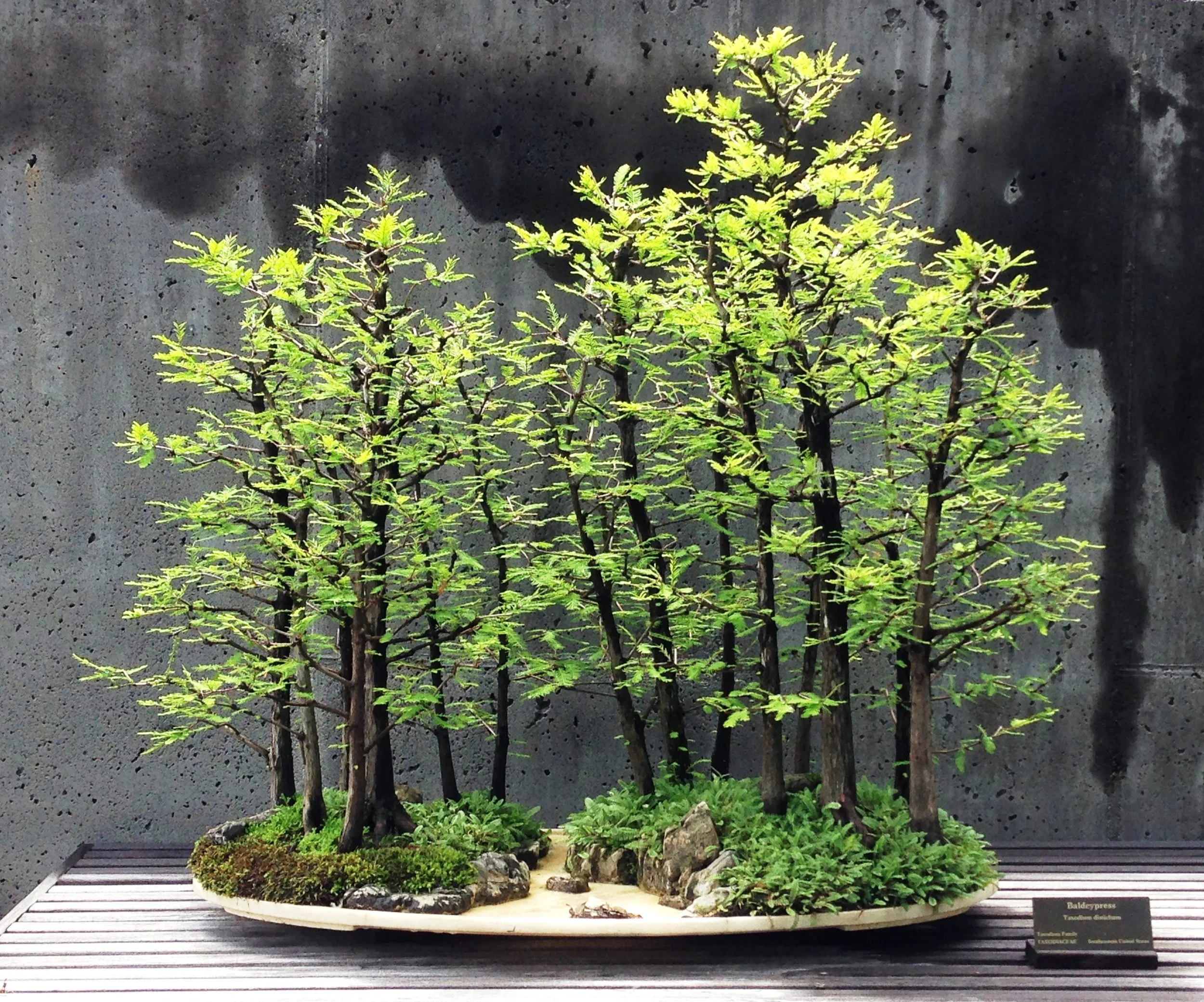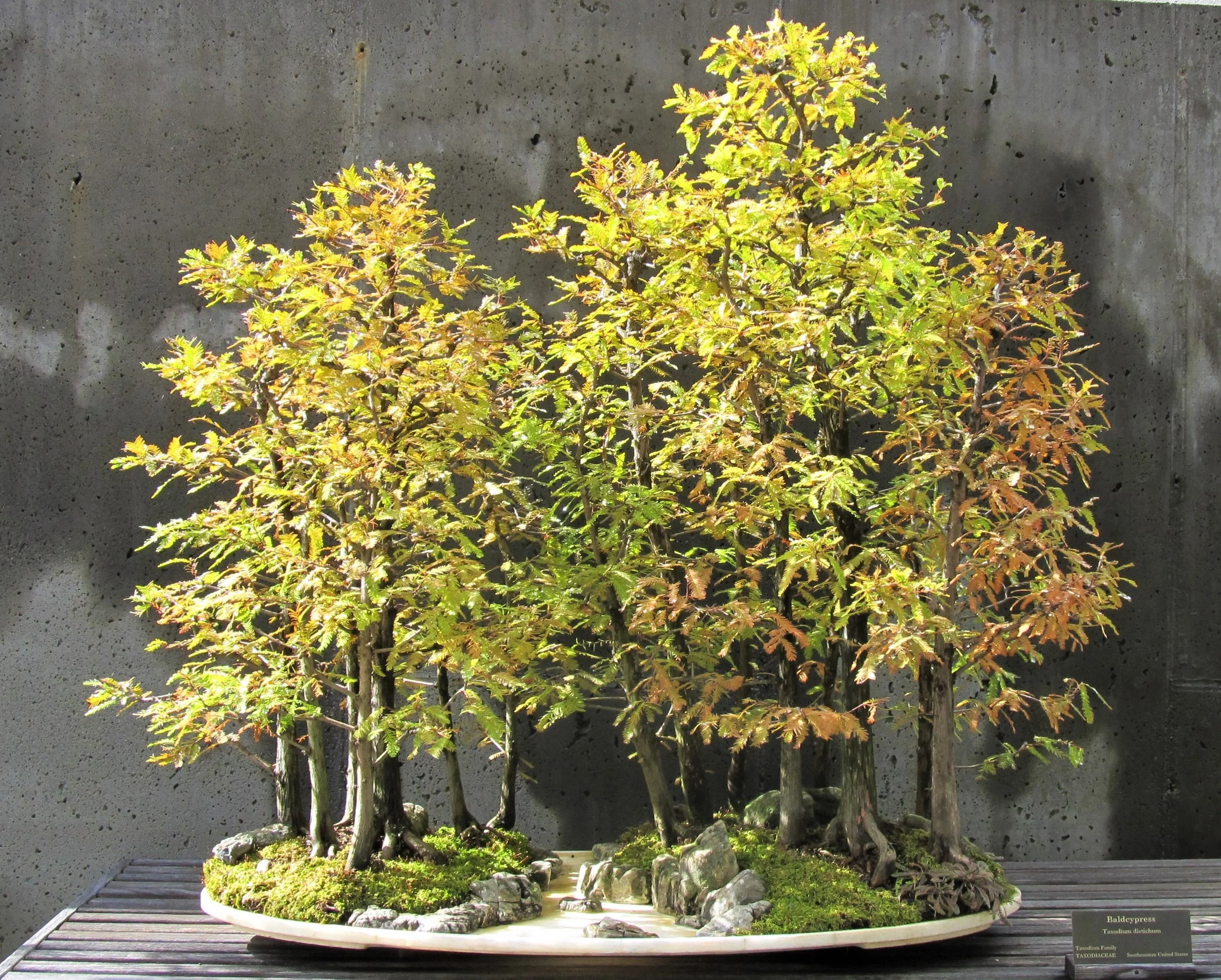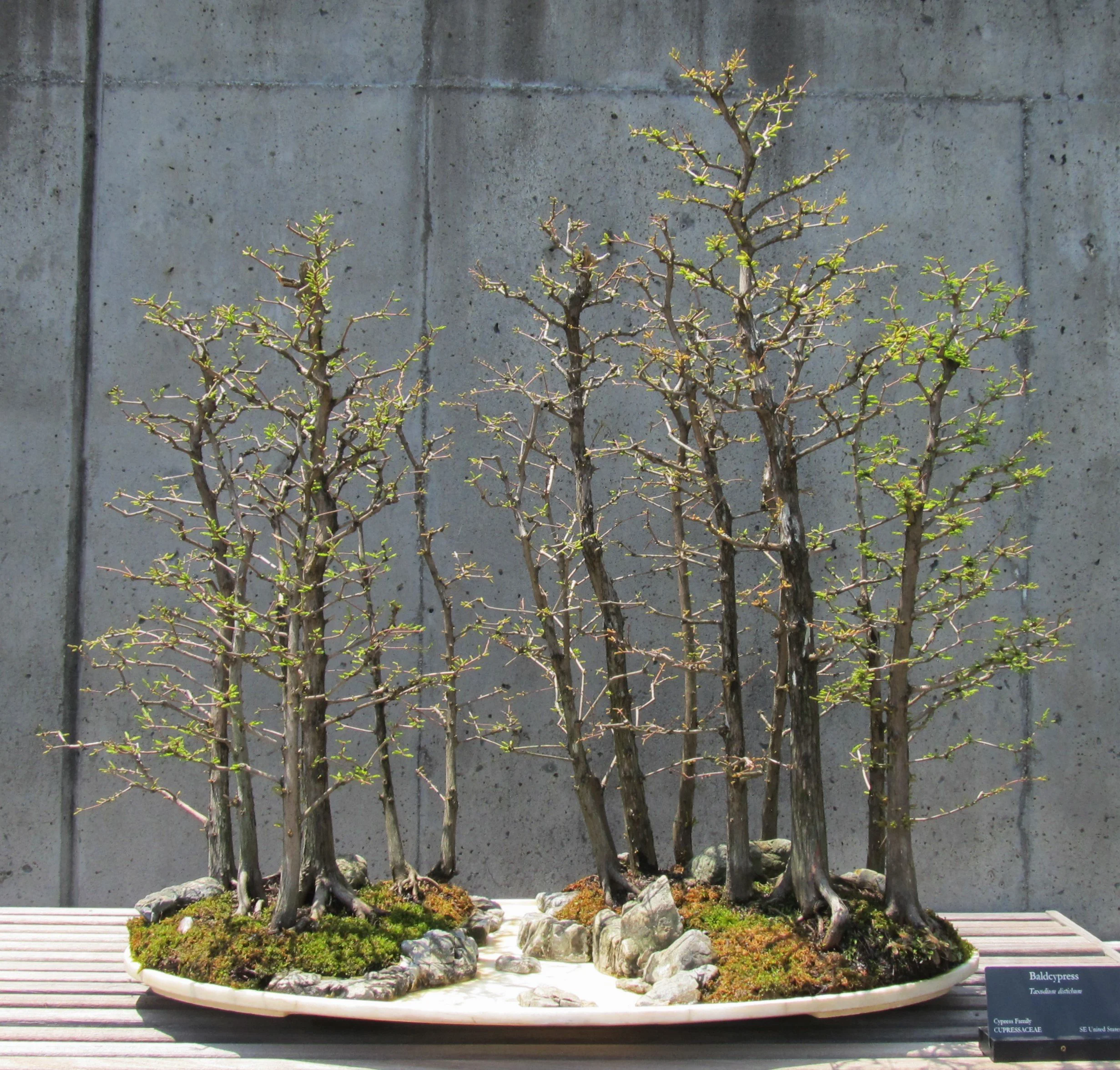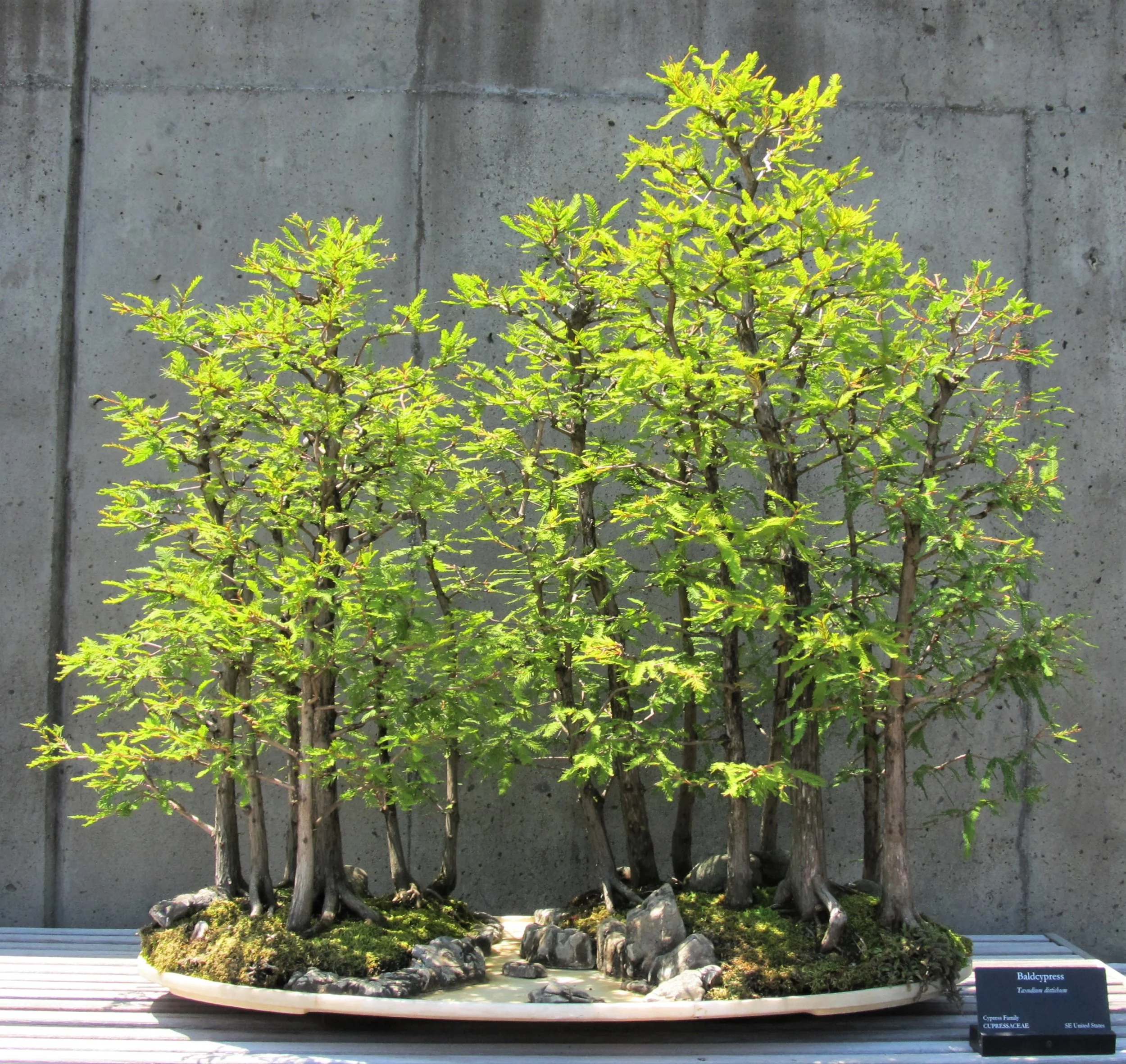Water and Land
In the early years of the Arboretum bonsai collection I placed great value on any additions that were created by guest artists. By the late 90s our collection included work by Yuji Yoshimura, Chase Rosade, Ben Oki, Peter Adams, Bill Valavanis, Susumu Nakamura and then Qingquang Zhao. In almost every instance, the work we had was a forest planting made from young plant material grown at the Arboretum. Usually the piece was also the product of a demonstration program, wherein the guest artist had a couple hours in front of a live audience to do the work. These were not great works of art. In a few cases, however, they turned out to be the beginnings of some fine specimens. Thirty years of development will do that for a bonsai.
The great value of these plantings was their association with famous names of the day. If I was speaking to people who knew something about bonsai I would never fail to mention that the Arboretum collection included work by Yuji Yoshimura, Chase Rosade, Ben Oki, and right on down the list. If I was talking to a non-bonsai audience I would recite the same names then helpfully explain that these were some of the most famous artists in the world of bonsai. I had to promote the bonsai program all the time in those days, in any way I could, and cashing in on borrowed legitimacy was nothing to be shied away from.
There was a less cynical side to it, too. I learned a lot from all the bonsai artists who came to the Arboretum. I was their host and spent as much time with those people as possible during their brief stays, and I watched them work up close and asked questions, talked shop and learned as much as I could. It was an important part of my bonsai education. I was also the one who became caretaker of the work they did, the one who would carry their creations forward into the future, and I took that responsibility seriously. I wanted all of the work they did for us to one day become famous bonsai pieces in our collection. I studied what these artists created to find out how each went about the business of composing a tree, or a group of trees, and over time it helped me develop my own sense of what works and what doesn't. Even today, when I deal with anything we still have in our collection that was originally done by one of the guest artists of yesteryear, I'm aware of that fact and make that association. The piece links me back through the years to the person who made it.
The baldcypress water-and-land planting Mr. Zhao made for us in his 1998 demonstration program was remarkably good right from the time he put it together. It had a great feeling to it, a kind of authenticity that evoked the experience of being in nature, somewhere in the hushed coniferous forest where the sound of water splashing on rock is so persistent it ceases to be noticeable. It took almost no effort to go there — to look at the landscape Mr. Zhao made and travel in your mind to that place in the imaginary forest. The trees were young, that was the only thing holding the planting back. The trees were young and their branching was mostly not there yet. The ground plane was excellent, though, with the old Chinese stones and an understory of mondo grass (Ophiopogon japonicus), and a little plant called brass buttons (Cotula coronopifolia) that did a good impersonation of a miniature fern. Mr. Zhao paid close attention to every detail.
The young baldcypress trees may have needed more development, but the stream feature of the planting did not. In a water-and-land penjing the water is almost always physically absent. The space where the water is meant to be is delineated by the contours of the land, and this emptiness puts the suggestion of water into the mind of the viewer. As soon as Mr. Zhao arranged the rocks into a pattern that suggested a stream and the plants were set in place, the water feature was good to go. All that was needed was a viewer with an imagination to stand before the scene and contemplate it.
Plenty of viewers had the opportunity in the ensuing years. The baldcypress water-and-land planting was first publicly displayed at the opening of the Bonsai Exhibition Garden in October of 2005 and was a perennial favorite for fourteen straight years after that. Along the way all the baldcypress trees matured, becoming thicker and well-branched:
October 2005
October 2006
2007
2008
June 2009
2010
August 2011
October 2011
November 2012
November 2013
In 2014 it was time to root prune the forest. This job hadn't been done since the planting had been put together sixteen years earlier because the plants never showed any signs of stress. Everything grew well. The soil level had risen, but the landscape still looked good and the plants were healthy so I left well enough alone. Then one day I noticed the rocks delineating the stream were started to rise up in the air. Mr. Zhao had cemented those rocks onto the marble slab and now the hydraulic-powered tree roots were lifting them off. The repotting work was done with the help of my friend and sometime assistant, Charlie, and was photo-documented:
September 2014, prior to repotting.
Stones being lifted off the marble slab as the soil level rises.
The soil was rising because roots were accumulating underneath the soil mass in a thick mat.
Cleaning the stained white marble proved a difficult job. We used substances that probably shouldn’t be used on marble and the slab still didn’t come so clean. The whitest part was where the stones had been cemented in place.
We carefully put the stones back where they had been, using a two-part epoxy instead of cement to hold them in place.
A strong jet of water was used to help remove a build-up of soil and roots on the top side of the root mass. Roots had been piling up on both the bottom and the top of the mass, and needed to be pruned in both areas.
A reciprocating saw was used to slice off the bottom where the roots were thickest.
The two sections of the planting, one from each side of the stream. I did not want to break up the arrangement of trees, so the root masses were carved top and bottom and tight in from the sides. Wedges were cut into the root mass to penetrate more into the interior of it.
The newly-cleaned slab set up for replanting, with a thin layer of medium laid down in the planting beds.
The two groves of trees were carefully positioned back in place.
Muck was used in places where potting medium wouldn’t have stayed put.
Once all was in place moss was applied, particularly to cover all the muck. Pins were used to staple the moss in place.
September 2014, the repotting job completed.
The baldcypress water-and-land planting was no sooner reassembled than it resumed being an annual feature in the garden:
May 2015
September 2015
November 2015
May 2017
November 2017
May 2018
June 2018
October 2018
May 2019
August 2019
November 2019
Over the span of more than two decades, through all the seasons, this planting was a pleasure to behold.
Was. It must be spoken of in the past tense now because it no longer exists in its previous form, the way you see it in the pictures above.
In 2020 the main tree in the planting started showing signs of stress and before long it was mostly dead. That tree had been the one not belonging to the same stock as all the others, the one Mr. Zhao had asked for so the composition might have a big main tree. I don’t know if that fact had anything to do with the tree’s demise; probably not. Conditions had been getting crowded in the planting, with all the trees growing year after year. A few trees had root bases pressed right up to the rim of the slab with no room left to grow except over the edge. I thought briefly about the prospect of getting a larger oval slab and a few more similar stones and “bumping up” the planting to give the trees more room. The more I thought about it, though, the more impracticable that scheme sounded. I considered the possibility of removing a few trees to make more room for the remaining ones, and gave up on that strategy because ultimately I couldn’t picture it working out. So I watched and studied on it and time passed.
When the main tree died it essentially ruined this landscape. Once more I ran through my mind all sorts of ideas in search of a solution for the problem, including the possibility of just accepting the reality of the dead tree and continuing to show the landscape as it was. But once again I couldn’t find a solution to believe in.
Every road comes to an end somewhere. This planting was a pleasure to behold, and I hope a few of the photos shown above give a sense of that because they’re all that’s left of it now. I should say, the photos are all that’s left of the planting as it was. The baldcypress trees, all except the main one, are still alive, still in two clumps but now potted in two big plastic trays. They’re wild now, overgrown and shabby looking, but still alive. With a little time and effort the trees could be brought back into shape. The oval marble slab is still good, the stones still epoxied in place, although it’s all in a shamefully neglected state. Still good, though. Such things can be cleaned.
What was is gone forever. What remains can be made into the start of something new. So it goes — the beginning leads to the end and the end to the beginning.
To be continued…

